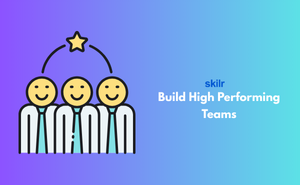👇 CELEBRATE CLOUD SECURITY DAY 👇
00
HOURS
00
MINUTES
00
SECONDS

The Build High Performing Teams certification focuses on equipping learners with the ability to develop and guide teams that consistently deliver results. A high-performing team is defined by its shared vision, clear communication, and collective accountability, rather than just individual talent. This certification shows how to harness diversity, maintain harmony, and align everyone toward a common goal.
Participants will explore leadership skills, conflict resolution, and motivational methods that transform ordinary groups into exceptional teams. These lessons prepare learners to improve performance, build trust, and create collaborative work environments that succeed across industries and professional fields.
This exam is ideal for:
Industry-endorsed certificates to strengthen your career profile.
Start learning immediately with digital materials, no delays.
Practice until you’re fully confident, at no additional charge.
Study anytime, anywhere, on laptop, tablet, or smartphone.
Courses and practice exams developed by qualified professionals.
Support available round the clock whenever you need help.
Easy-to-follow content with practice exams and assessments.
Join a global community of professionals advancing their skills.
All industries, including business, education, healthcare, IT, and creative sectors.
Leadership, communication, motivation, conflict resolution, and culture-building skills.
Yes, it provides tools and frameworks to lead effectively from the start.
By teaching communication techniques, trust-building, and shared accountability methods.
Yes, it includes insights on handling hybrid and remote teams effectively.
Yes, real-world case studies and strategies are covered.
Absolutely, it builds leadership foundations useful in any career path.
A group that works collaboratively, communicates effectively, and consistently achieves goals.
Leaders, managers, HR professionals, students, and anyone working in team environments.
No, the program covers both basics and advanced strategies.